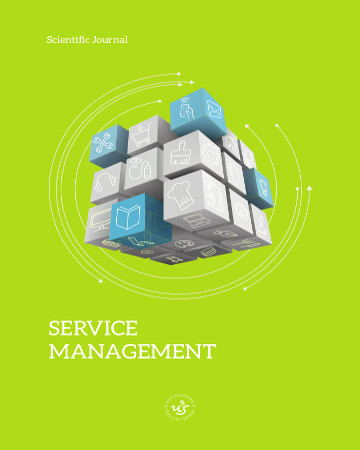
ISSN: 2450-8535
eISSN: 2451-2729
OAI
DOI: 10.18276/ejsm.2018.27/2-52


Lista wydań /
Vol. 27/2, 3/2018
Cross-border collaboration for innovation in tourism: The case of oceanographic museums
| Autorzy: |
Jakub
Swacha
University of Szczecin, Wydział Nauk Ekonomicznych i Zarządzania Susanne Marx Hochschule Stralsund Karolina Muszyńska University of Szczecin, Wydział Nauk Ekonomicznych i Zarządzania Grażyna Niedoszytko Morski Instytut Rybacki – Państwowy Instytut Badawczy w Gdyni Weronika Podlesińska Morski Instytut Rybacki – Państwowy Instytut Badawczy w Gdyni Jurgita Eglinskiene Lietuvos Jūrų Muziejus |
| Słowa kluczowe: | cross-border collaboration tourism management innovation in tourism European funds |
| Data publikacji całości: | 2018-12-31 |
| Liczba stron: | 8 (425-432) |
| Klasyfikacja JEL: | O33 Z32 |
Abstrakt
One of the key cross-border collaboration areas covered by the support of the European Union is tourism. As a policy area of the EU Strategy for the Baltic Sea Region, tourism is of strategic importance in the region. While EU reports present mostly aggregated information on the outcomes and achievements within respective programmes, this paper takes a case study approach and concentrates on a single project, aimed at introducing an augmented form of touring based on interactive multimedia guides in three oceanographic museums located in the South Baltic area. The research goal is to reveal the obstacles encountered during the project implementation, the solutions applied to ensure efficient cooperation, the project’s influence on the mutual perception of the participating organizations and its benefits as seen from the perspective of the personnel involved in the project’s realization as well as their general attitude to the project after its completion.
Pobierz plik
Plik artykułu
Bibliografia
| 1. | De Jong, C. (2014). A white decay of winter tourism in Europe? In: A. Prutsch, T. Grothmann, S. McCallum, I. Schauser, R. Swart (eds.), Climate change adaptation manual: lessons learned from European and other industrialised countries. Abingdon, UK/New York, NY, USA: Routledge. |
| 2. | De Sousa, L. (2012). Understanding European Cross-border Cooperation: A Framework for Analysis. Journal of European Integration, 35 (6), 669–687. |
| 3. | EC (2015). Guide on EU Funding for the Tourism Sector. Directorate-General for Internal Market, Industry, Entrepreneurship and SMEs. Retrieved from: http://ec.europa.eu/DocsRoom/documents/11623/attachments/1/translations/en/renditions/native. |
| 4. | EMSEA (2014). Second European Marine Science Educators Association Conference. University of Gothenburg, Sweden. Retrieved from: www.emsea.eu/editor_upload/ File/gothenburg/emsea14-handbook.pdf. |
| 5. | Estol, J., Font, X. (2016). European tourism policy: Its evolution and structure. Tourism Management, 52, 230–241. |
| 6. | EUSBSR (2017). Implementation. EU Strategy for the Baltic Sea Region. Retrieved from: https://www.balticsea-region-strategy.eu/about/implementation-menu (August 20, 2017). |
| 7. | Gasik, S. (2011). A model of project knowledge management. Project Management Journal, 42 (3), 23–44. |
| 8. | Ioannides, D., Nielsen, P.Å., Billing, P. (2006). Transboundary Collaboration in Tourism: the Case of the Bothnian Arc. Tourism Geographies, 8, 122–142. |
| 9. | Kianto, A., Vanhala, M., Heilmann, P. (2016). The impact of knowledge management on job satisfaction. Journal of Knowledge Management, 20(4), 621–636. |
| 10. | Leibenath, M. (2007). Europeanisation of Cross-border Governance? A Case Study on the Cause, Form and Consequences of a Cooperation Project in the German–Polish–Czech Border Triangle. Space and Polity, 11 (2), 151–167. |
| 11. | Maznevski, M., Chudoba, K. (2013). Bridging global virtual team space over time: global virtual team dynamics and effectiveness. Organization Science, 11 (5), 473–492. |
| 12. | Zdziebko, T., Drążek, Z., Swacha, J., Muszyńska, K. (2017). Interaktywne przewodniki multimedialne w ocenie zwiedzających. Ekonomiczne Problemy Turystyki, 1, 159–168. |